Multifamily Housing - More Popular Than Ever
Overall, fire-retardant-treated lumber must meet IBC code requirements for fire-retardant-treated wood as defined in IBC 2303.2 for wood used as a construction material. It must also be labeled according to the requirements in IBC 2303.2.4. With all of the familiar versatility of wood framing and sheathing, FRTW allows for creative designs that are safe, code-compliant, and economical.
USING MIRRORS TO ENHANCE INTERIOR DESIGN
The interior design of multifamily living spaces, particularly bathrooms, often focuses on ways to help small spaces look or feel a bit bigger than they actually are. At the same time, they need to meet functionality requirements for convenience, cost limitations of development budgets, and market requirements for overall design quality. Often, this combination of criteria translates into clean, elegant, contemporary solutions that include not only material selections but also the selection of components and accessories that enhance the overall look of bathrooms in multifamily projects. In particular, the use of mirrors in such bathrooms becomes an interior design element that can address all of these design requirements and contribute to an overall living experience. Framed mirrors could act the same way as a piece of art that enhances a room, particularly if powder-coated colored frames are used. The mirror itself can reflect different room elements or aspects when viewed from different angles.
Mirror Types
While mirrors and medicine cabinets are common design components for bathrooms, there are lots of options to choose from. When selected and incorporated into an overall design, they can enhance the appearance and perceived quality of the entire multifamily property. From a marketing standpoint that means good interior design that includes tasteful, cost-effective lighting and mirrors can improve customer perceptions of a living unit. It can also be more advantageous to consider manufactured mirror products that meet not only the design requirements for a project but the construction schedule and cost aspects as well.
With the above in mind, here are some of the basic options to consider.
Frameless Mirrors: This is a classic, economical choice with crisp, clean edges that allow for full-width visibility and edge-to-edge reflection. It is great for areas with smaller dimensions or a tight-fitting installation. Installation is very straightforward with multiple mounting options available such as clips (metal or plastic), aluminum j-channel, standoffs, and mastic. The edges of the mirror can be flat-polished, pencil-polished, or beveled edge. They can be ordered in custom sizes but will likely be more economical when ordered in bulk for multiple dwelling units requiring the same size.
Floating/Infinity Mirrors: A more elegant option uses a frameless floating mounted mirror. The frame is wholly or partly concealed with a depth that places the mirror edges out from the wall surface, thus giving it the illusion of floating or extending into “infinity.” The frame depth is customizable to suit different design needs and theft-resistant concealed mounting is available. Such products are generally made to order in custom sizes but ordering in quantities may help with the pricing.
Framed Mirrors: Rectangular mirrors with a metal or wood frame can provide a traditional or contemporary look that can be selected to meet a range of design intents. Wood-framed products can be specified by selecting from a wide variety of molding profiles. Metal framed mirrors can have a clean and simple look with a stainless-steel frame and mitered corners. A variation on a flush, framed mirror is an ADA-compliant fixed tilt mirror, which has a frame that is thicker on the top than it is on the bottom in order to achieve the needed tilt angle for someone in a wheelchair to use. In all cases, the mirror frame can be integrated with a concealed mounting system which can reduce the time and cost of installation.
Rounded Rectangular Mirrors: For a more contemporary look, mirror products are available with a metal frame that has rounded corners and a small floating gap. Not only are they more elegant, but some have a very easy, safe mounting system, saving the building owner expense in the installation process. Rounded mirrors or pill-shaped mirrors are also seeing a resurgence in popularity.
LED Lighted Mirrors: Most bathrooms require lighting around the mirror, and LED lighting technology is being directly integrated with the mirrors. Whether lighted from behind (through a frosted or etched area) or a simple halo effect around the edge, this approach is becoming very popular with both renters and owners. LED technology draws very little power while giving additional ambiance to the installation. Upkeep is simple as the lights typically last 30,000 to 50,000 hours. The lighting not only provides even and useful illumination for the user but can enhance the design of the space with controllable light qualities. Mirrors can be backlit or side-lit with different frosting options over the LED lighting which can range in color between 3000k, 4000k, 5000k, and 6000k. In all cases, UL-tested and rated products are available and should be selected for electrical safety.
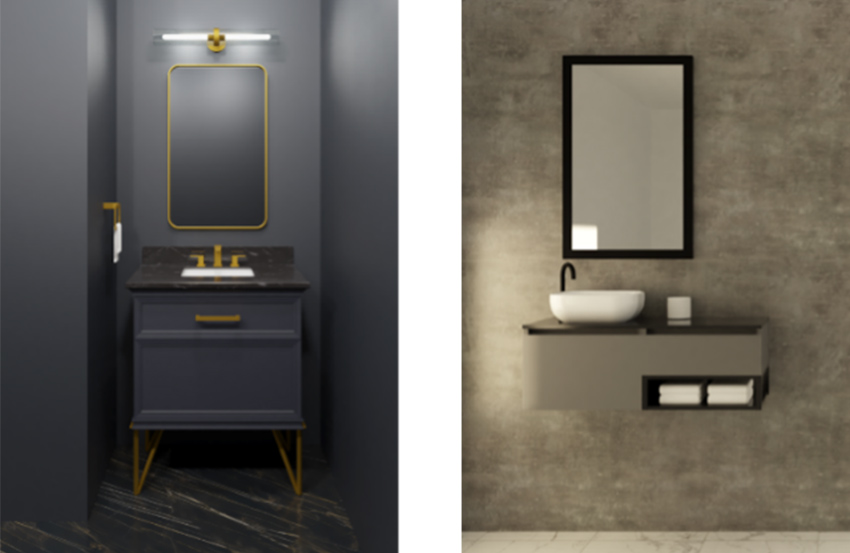
Photos courtesy of Meek Mirrors, LLC
The use of mirror products with different framed or frameless choices and finishes can enhance the interior design of multifamily bathroom spaces.
Regardless of the type selected, manufactured mirror products can influence the marketability and design quality of multifamily spaces while helping to meet budget and scheduling constraints.
GREEN, EFFICIENT BATHROOMS
Interior living space is at a premium in popular urban and suburban areas across the United States. Nonetheless, residents of multifamily buildings are generally willing to live in denser settings as long as they align with their values and meet their lifestyle requirements. It has also been documented that residents highly prioritize amenities that meet sustainability and eco-friendly design standards, not just for energy but also in bathrooms where water conservation is essential. According to a Nielsen survey, 73 percent of millennials are willing to pay more for sustainable solutions. They indicate that "Despite the fact that Millennials are coming of age in one of the most difficult economic climates in the past 100 years, they continue to be most willing to pay extra for sustainable offerings–almost three out of four respondents."
Beyond the green building preference, these consumers also want smart tech, and they routinely prefer well-designed, and upscale bathrooms that work with the overall design intent of the project. In many cases, there is a need to provide accessible bathrooms, too, with the need to provide proper clearances and spaces around bathroom fixtures. This all needs to be balanced with an efficient layout that doesn’t take up extra square footage, particularly when budgets are being scrutinized.
Concealed Installation Systems
Many of the observed trends and desires for bathroom design in multifamily units can readily be satisfied by paying attention to the types of plumbing fixtures used. A very popular European approach that has been the norm for decades uses fixture systems with many of the functional parts behind a finished wall. Such in-wall installation systems improve the overall aesthetics of the bathroom design because they remove unsightly hardware—for example, the toilet tank—from view. In-wall systems for toilets, urinals, bidets, and washbasins are based on a concealed steel frame that attaches inside the wall and supports wall-hung plumbing fixtures.
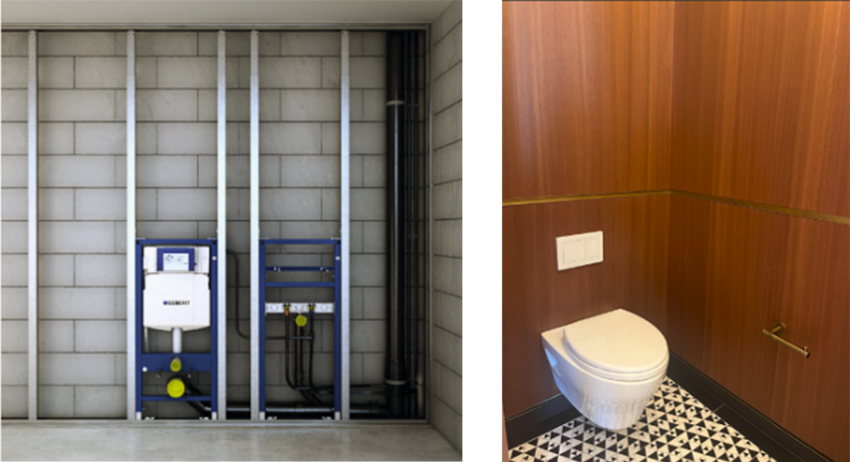
Photos courtesy of Geberit
In-wall toilet systems conceal the supports and plumbing in the wall and allow for a cleaner, more elegant appearance when projects are completed.
As a result of this concealed approach, the visible part of the fixture seems to "float" in the bathroom, creating visual appeal and some added practicalities. In-wall fixture systems open up the entire floor for easy floor cleaning under the “floating” fixture. These fixtures also stay clean longer since there are fewer seams and crevices than traditional fixtures for dirt and germs to accumulate. Since some of the fixture is moved into the wall, greater accessibility can be achieved–there are fewer obstructions and more clear floor space than in a standard bathroom setup. Of particular importance in multifamily buildings, the system is designed to operate more quietly than a standard floor-mounted toilet, reducing noise transfer from space to space.
Water Management
An in-wall toilet system offers particular water efficiency benefits in a multifamily building. According to the U.S. Environmental Protection Agency (EPA), the highest percentage of water use in buildings comes from domestic restrooms. This makes the size of the toilet tank particularly important. Though the standard flush volume is 1.6 gallons, for sustainable projects, especially in regions with water conservation needs, a reduced size tank at 1.28/0.8 gallons per flush is becoming more desirable.
Notice
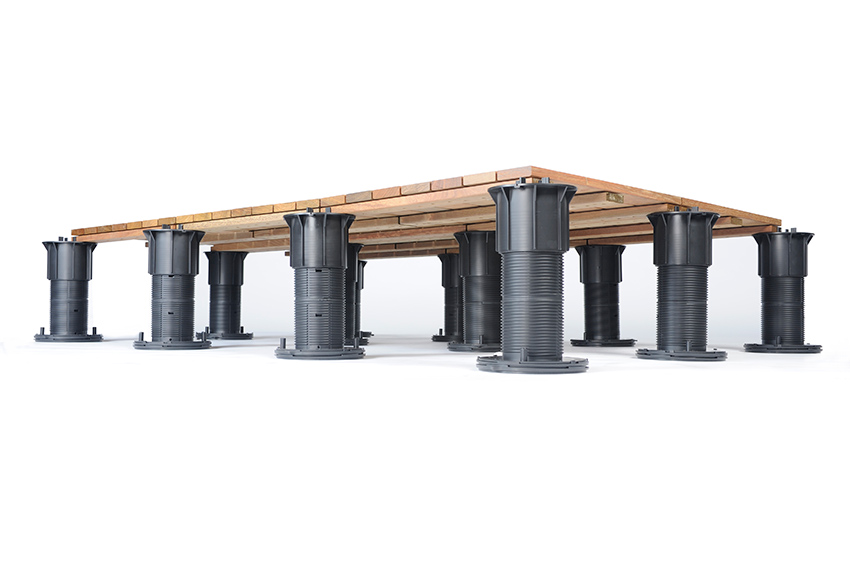
www.bisonip.com
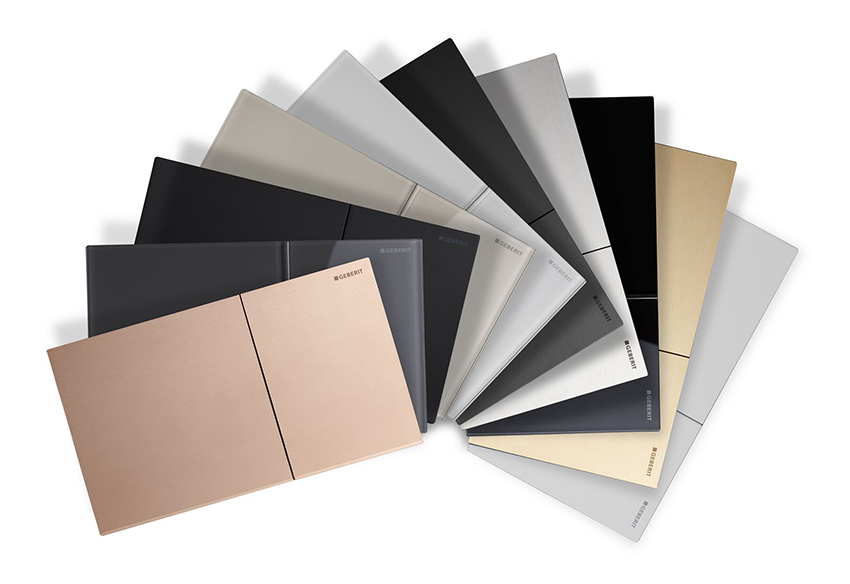
www.geberit.us

www.meekmirrors.com
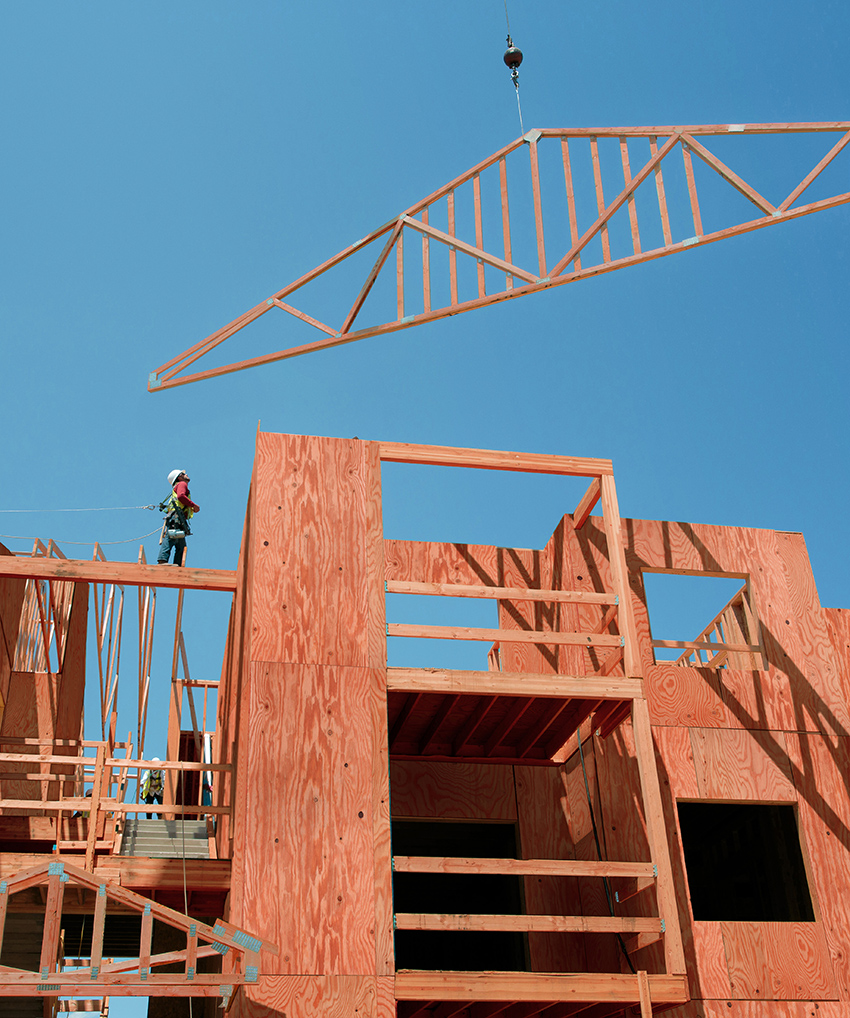
www.prowoodlumber.com









